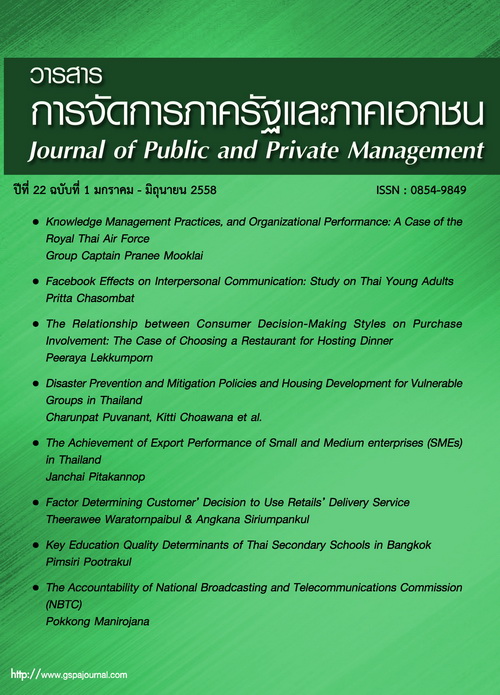The Relationship between Consumer Decision-Making Styles on Purchase Involvement: The Case of Choosing a Restaurant for Hosting Dinner
Keywords:
Consumer behavior, market segmentation, consumers decision-making style inventoryAbstract
This study aims at segmenting consumers using Consumers Style Inventory (CSI) and to examine the CSI segments with the effort and motivation of restaurant-choice decision. Firstly, K-mean Cluster Analysis was utilized to create a cluster of Australian consumers using CSI. Secondly, ANOVA Analysis was conducted to examine the consumer clusters with the effort and motivation when choosing a restaurant for hosting dinner. Five clusters of CSI were found: Smart-Overloaded data; Smart-Fashion; Brand-Fashion; Apathetic-Smart; and Smart-Enjoy. There are differences between each cluster in aspects of the effort and motivation of restaurant-choice decision. For the effort toward shopping, the Smart-Enjoy seem to be the most enthusiastic whereas the Apathetic-Smart represent their passivism. For motivation, when choosing a restaurant for hosting dinner for other people, all clusters tend to concern about their image as seen in all clusters are significant in ‘Image Conscious’, but in a different degree. There are 3 groups with high scores of Habitual/Brand Loyal such as Smart-Enjoy, Smart-Overloaded, and Brand-Fashion were motivated to choose ‘Convenient and Secure’ choice. Lastly, the only fashion-concern group such as Smart-Fashion and Brand-Fashion utilized the motivation of ‘Self Perception’ for their choices.
Cluster Analysis which is the tool for segmentation is considered as the subjective technique arbitrarily used by researchers. Also the respondents were limited only the working people, so the students or unemployed people were underrepresented. Lastly the data has been collected within one cultural context, Australia, so the results could not be generalized to other contexts. This study can be utilized as a tool for restaurant managers in order to plan their marketing strategy more effectively. Empirically, it is not oftenly found a study about segmentation via CSI which was linked to the behavioural factors such as effort and attitudinal factors such as motivation. Thus this study can bridge such a gap.



